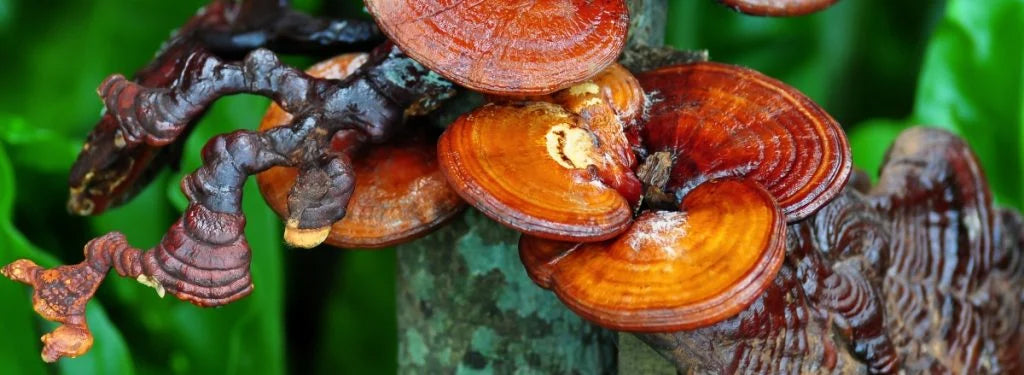
Smart Environment Control Solution for Reishi Mushroom Farming
A smart environment control solution for lion's mane mushroom farming can significantly enhance the growth conditions, yield, and quality of the mushrooms. Here is a comprehensive plan:
1. Environmental Monitoring
- Temperature: Reishi mushrooms thrive in a temperature range of 22 - 28°C during the vegetative growth phase and 24 - 26°C during the fruiting phase. Install high - precision digital temperature sensors in the growing area. These sensors can continuously monitor the temperature and send real - time data to a central control system. For example, if the temperature exceeds the upper limit, the system can activate cooling fans or air - conditioners; if it drops below the lower limit, heating devices like electric heaters can be turned on.
- Humidity: The suitable humidity for Reishi mushroom growth is around 85% - 95%. Use humidity sensors to measure the air humidity. When the humidity is too low, misting systems or humidifiers can be activated to increase the moisture in the air. Conversely, if the humidity is too high, dehumidifiers can be used to maintain the optimal level.
- Light: Reishi mushrooms are sensitive to light. They require a low - light environment with a light intensity of about 50 - 200 lux. Install light sensors to monitor the light intensity. Supplemental lighting can be provided using LED grow lights with adjustable intensity and spectrum if the natural light is insufficient. The light intensity and photoperiod can be adjusted according to the growth stage of the mushrooms.
- Carbon Dioxide (CO₂): CO₂ is important for the growth of Reishi mushrooms. The optimal CO₂ concentration is around 600 - 1500 ppm. Sensors can be used to measure the CO₂ level in the growing environment. If the concentration is too low, CO₂ generators can be used to increase it; if it is too high, ventilation systems can be activated to reduce it.
2. Automated Control Systems
- Irrigation System: Develop an automated irrigation system based on soil moisture sensors. The sensors can detect the moisture content of the substrate in which the Reishi mushrooms are growing. When the moisture level drops below a certain threshold, the irrigation system automatically waters the mushrooms, ensuring they receive an adequate amount of water without over - watering.
- Ventilation System: Install automated ventilation fans. These fans can be controlled by the central system according to the temperature, humidity, and CO₂ concentration. For example, when the temperature or CO₂ concentration rises, the fans can be turned on to exchange the air in the growing area, maintaining a stable environment.
- Lighting System: The LED grow lights can be programmed to turn on and off automatically according to the light requirements of the Reishi mushrooms at different growth stages. This ensures that the mushrooms receive the right amount and quality of light throughout their growth cycle.
3. Data Collection and Analysis
- Data Collection: Use IoT - enabled sensors to collect real - time data on temperature, humidity, light, CO₂ concentration, and other environmental parameters. This data is then transmitted to a cloud - based platform for storage and analysis.
- Data Analysis: Employ data analytics tools to process the collected data. By analyzing the data, farmers can identify patterns and trends in the growth environment of Reishi mushrooms. For example, they can determine the optimal temperature and humidity ranges for different growth stages, predict potential disease outbreaks based on environmental changes, and optimize the use of resources such as water and energy.
4. Remote Monitoring and Alerts
- Remote Monitoring: Farmers can access the data from the cloud - based platform through mobile apps or web browsers. This allows them to monitor the growth environment of lion's mane mushrooms in real - time, no matter where they are.
- Alerts: Set up an alert system. When any of the environmental parameters deviate from the optimal range, the system can send notifications to the farmer's mobile device or email. This enables the farmer to take immediate action to correct the problem and prevent it from affecting the growth of the mushrooms.
5. Pest and Disease Management
- Monitoring: Use cameras and sensors to monitor the presence of pests and signs of diseases in the growing area. For example, infrared cameras can be used to detect the movement of pests at night, and sensors can detect changes in the color or texture of the mushrooms that may indicate disease.
- Prevention and Control: Based on the monitoring results, the system can automatically take preventive or control measures. For example, if pests are detected, the system can activate ultrasonic pest repellers or release beneficial insects. If diseases are detected, the system can adjust the environmental parameters (such as temperature and humidity) to inhibit the spread of the disease or activate biological control agents.
6. Energy Management
- Energy Monitoring: Install energy - monitoring sensors to track the energy consumption of various equipment in the Reishi mushroom farm, such as lighting systems, ventilation fans, and irrigation pumps.
- Energy Optimization: Analyze the energy - consumption data to identify areas where energy can be saved. For example, optimize the operation schedule of the equipment to reduce unnecessary energy consumption. Use energy - efficient lighting systems and sensors to minimize energy waste.
7. Conclusion
In conclusion, by implementing this smart environment control solution, Reishi mushroom farmers can create a more stable and optimal growth environment, improve the quality and yield of the mushrooms, and reduce labor costs and energy consumption.